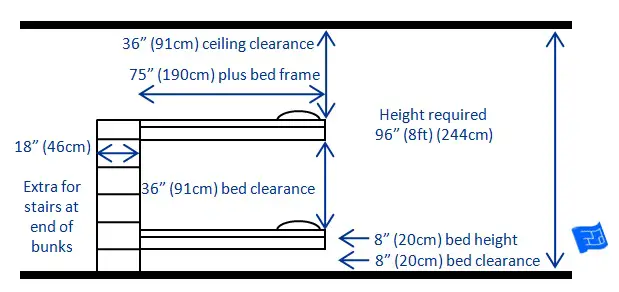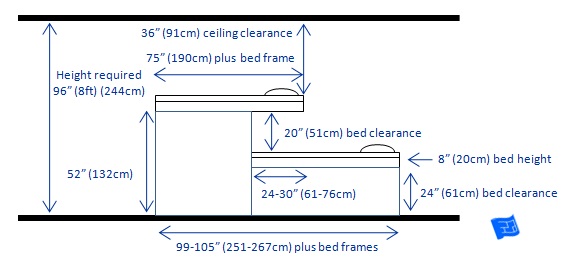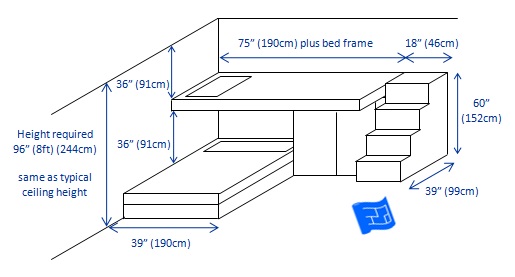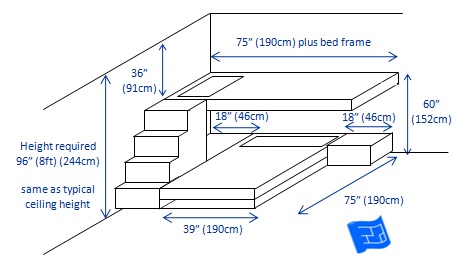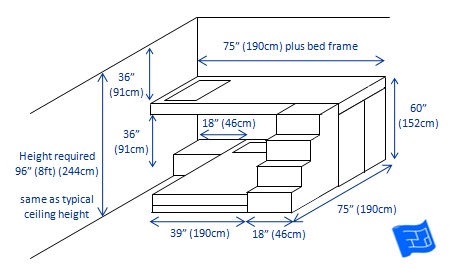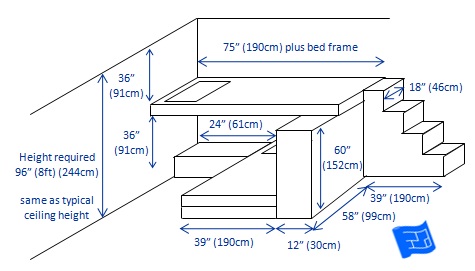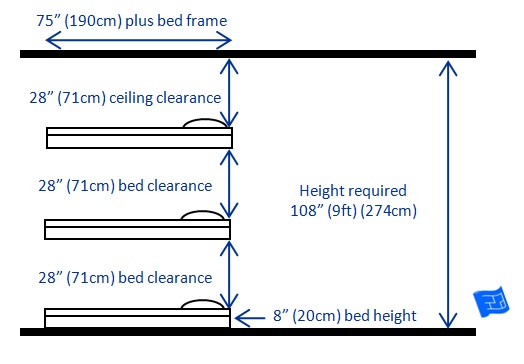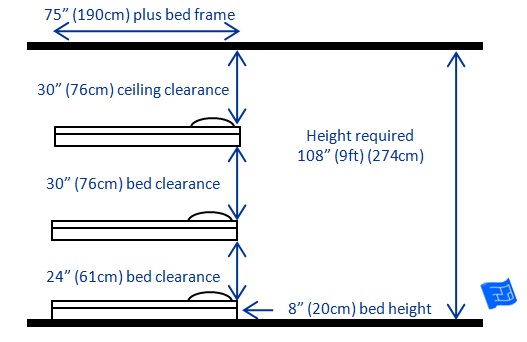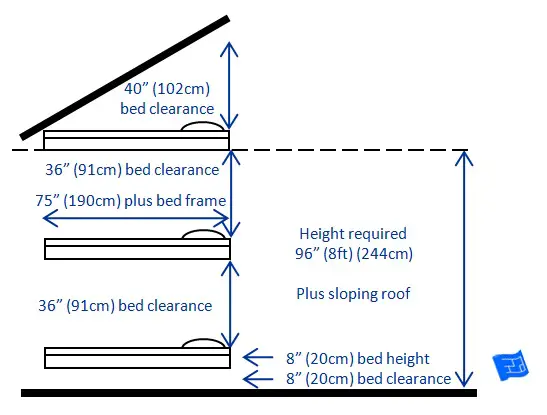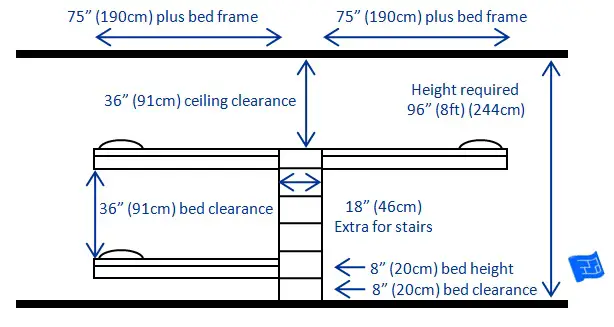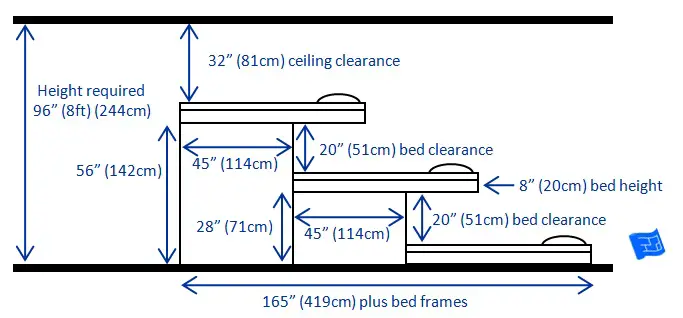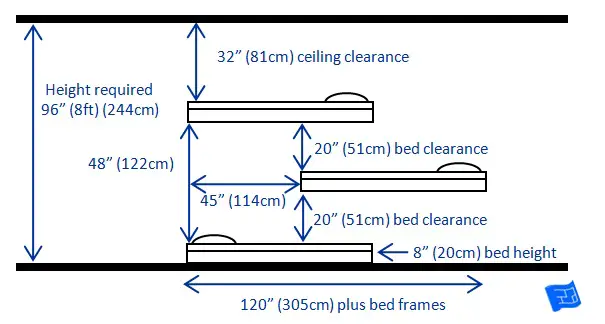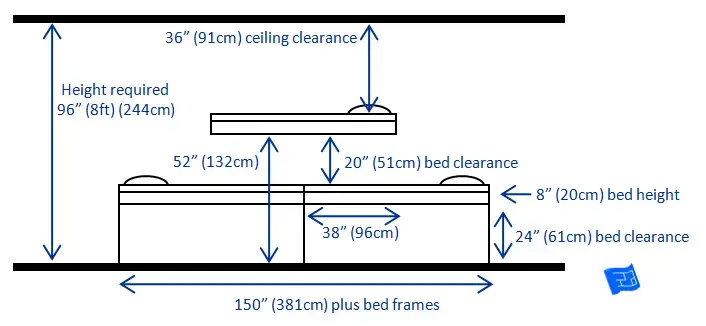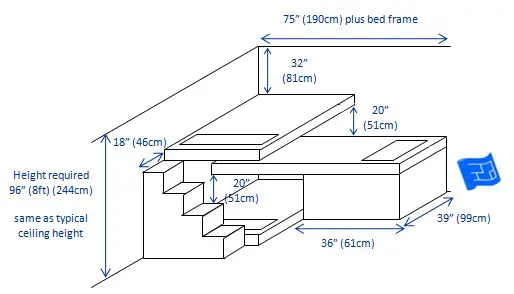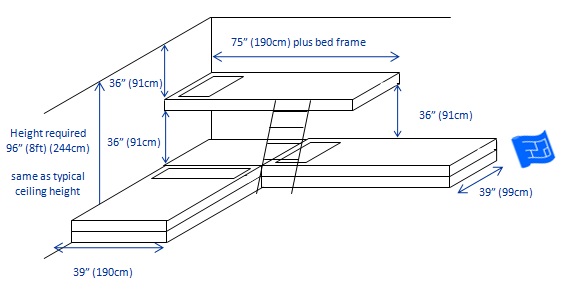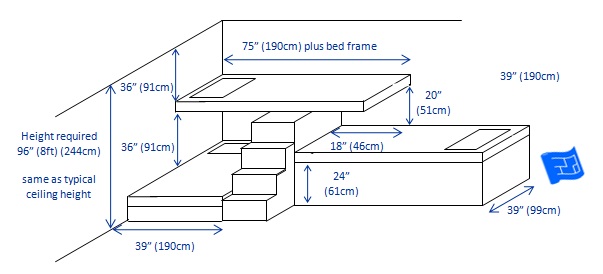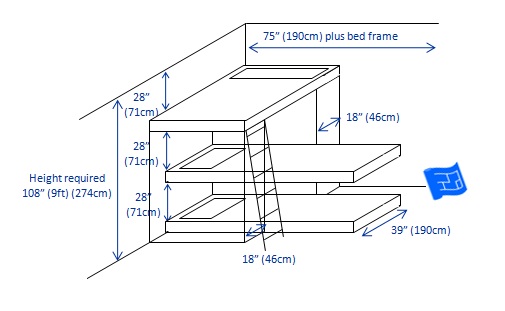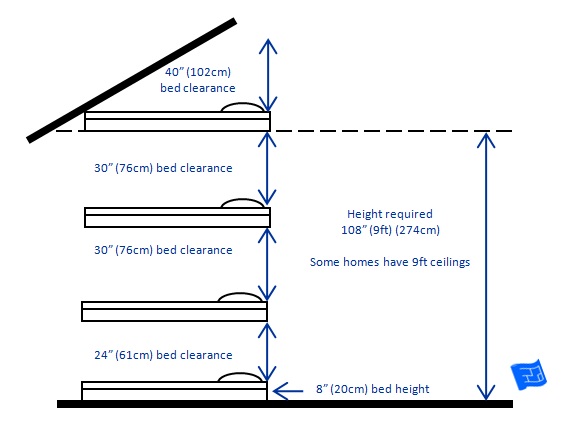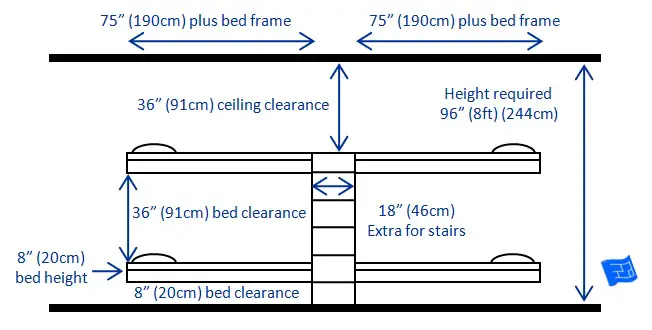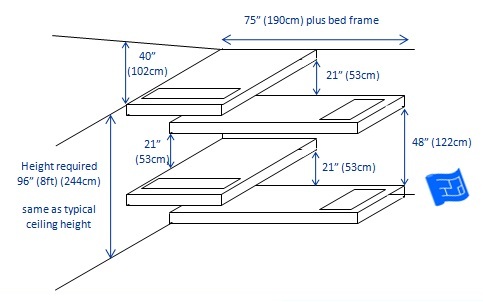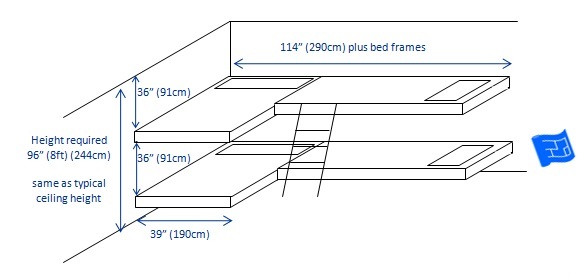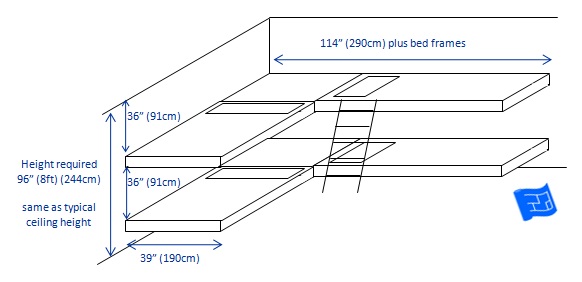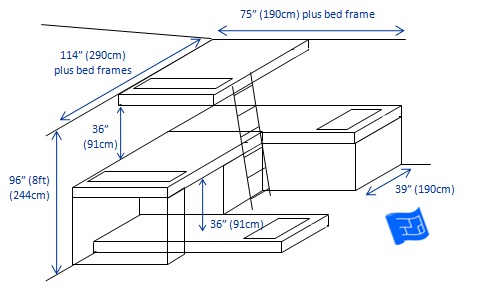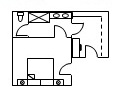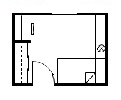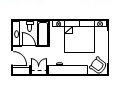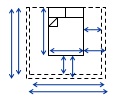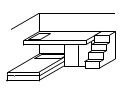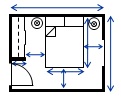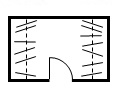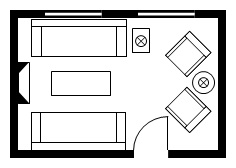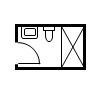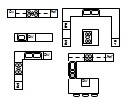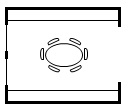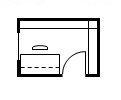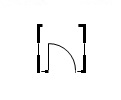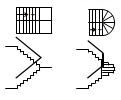- Home
- Bedroom Design
- Built in Bunk Beds
Built In Bunk Beds
There are some great pictures of built in bunk beds out there.
Here you can check that you've reviewed all the design possibilities, all with measurements. We'll also talk a little about design considerations so that you can figure out what will work best for you.
This page forms part of the bedroom design series.
We’re all familiar with the standard one up, one down bunk bed arrangement but have you considered overlapping arrangements, L-shape arrangements, T-shape arrangements for your built in bunk beds? There’s also triple and quadruple bunks. Then there’s two-down-one-up or one-down-two-up bunk bed designs. Of course I can't possible cover every single possible design but these bunk bed design tactics will get you thinking.
Here's a few shortcuts...
|
Also on this page.. |
Designs for ..... |
Built In Bunk beds - 2 bunks
Basic bunk beds - 2 bunks
So let's start with the basic arrangement of 2 bunk beds in a standard 8ft (244cm) height bedroom.
Of course if you've got a higher ceiling you could raise the bottom bunk off the floor by another foot to provide more storage or you could leave more clearance for each bed.
Ladders or stairs need to be about 18ins (46cm) wide so don't forget to add this on to your dimensions if you're building stairs at one end of the built in bunk beds rather than using a ladder.
Remember that a trip to a furniture store is a far more cost effective way to get kitted out with a basic bunk bed arrangement. If you've got the budget for built in bunk beds keep reading for some more original arrangements.
Overlapping bunk beds - 2 bunks
If you're room's big enough to off-set the bunk beds slightly an overlapping arrangement might be a good solution for you. This enables the lower bunk to be raised to provide more storage and there's space for storage under the upper bunk as well.
You can overlap your beds by up to 30in (76cm). Any more than this and the arrangment might start to feel a bit claustrophobic.
The pillow on the bottom bunk should be placed on the end of the bed free from the over lap. The pillow on the top bunk can be placed on either end of the bed.
L-shape bunk beds - 2 bunks
The bunks can also be arranged in an L-shape. There would be space for a wardrobe or a desk underneath the top bunk.
T-shape bunk beds - 2 bunks
If the beds are placed in a T-shape there are several design possibilities.
|
In this first design the stairs are by the wall which leaves a space behind for a large bedside counter. You could put more shelves in here for more storage if you like. The area under the stairs could also be used for storage either as shelves or drawers opening over the bed or over the stairs. |
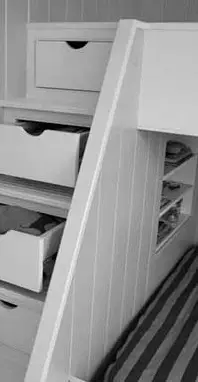 |
In this next design the stairs are brought out into them middle of the room.
Here the space on one side of the bed under the stairs can be used for storage opening into the room away from the bed. 18in (46cm) would not be deep enough for an adult wardrobe but if your kids clothes are small enough to hang on kids hangars (the ones I have are 12in (30cm)) then a kids wardrobe would fit will in this space. You could orientate the storage in the stairs out into the room or put storage under each stair like a drawer.
On the other side of the bed there's 18ins (46cm) of clearance which isn't enough to be comfortable for an adult, but if it's a kids room then this should be fine.
The other thing I like about this design is that the space is split up into sleeping and some other purpose (maybe playing or dressing or both). The lower bunk would have a really private, cozy feeling.
Now here's a t-shape design with more clearance on one side of the bed. There's the sane feeling of privacy and good space for shelving.
Built In Bunk Beds - 3 Bunks
Basic bunk beds - 3 bunks
Here are some design options for 3 bunk beds. If you have a 9ft (274cm) ceiling then you can fit 3 bunks in with the bottom bunk on the floor. Adults using these bunk beds would risk a few banged heads but they'd be fine for up to 9 year olds (based on average sitting height).
How about having variable bed clearances? Here the bottom bunk has 24in (61cm) clearance and the top two bunks have 30in (76cm) head room.
The bottom bunk would be perfect for a toddler being close to the floor so there's not far to fall and sufficient head room.
The top two bunks would be comfortable for up to about 11 years old - any older and there might be a few bruised heads.
If you have only an 8ft (244cm) ceiling but you do have a sloping roof you can fit in 3 bunks with bed clearances comfortable for adults and still have room for a bit of storage under the bottom bunk.
The overlapping bunk bed designs for 3 bunks are a good solution if you have 8ft of ceiling height and no sloping roof.
Of course they don't all have to be one on top of the other...
The arrangement below fits in the standard ceiling height of 8ft (244cm) and allows for great storage under one of the top bunks. All the bunks have comfortable head room. You could of course put two bunks down and one bunk up but that would sacrifice the storage.
Overlapping bunk beds - 3 bunks
If you've only got 8ft of ceiling height then an overlapping design could be the way to go.
If you stagger your bunk beds everyone gets enough headroom and there's also plenty of storage. Maybe drawers under the middle bunk and a wardrobe or desk under the top bunk. There's about the same storage as the 2 up, 1 down picture above and the picture above fits into roughly the same amount of horizontal wall space, especially if a ladder is used rather than built in stairs.
The top bunk will, of course, need a ladder or stairs. The middle bunk mattress height is 36in (91cm) so a small ladder or stool might be in order. If there are shelves built into the storage underneath these can act as a ladder - maybe with a hand hold on the base of the bed.
Stagger 'em slightly differently. This needs less wall space but you sacrifice some of the storage.
In this arrangement the lower built in bunks have been raised to provide storage. The top bunk overhangs the bottom bunks a bit more than ideal but it's still a workable arrangement.
L-shape bunk beds - 3 bunks
The more beds, the more exciting the design possibilities. Lots more than I can show here but these will get you thinking.
We'll start with 3 bunk built in bunk bed designs for an 8ft (244cm) ceiling. These are based on the dimensions established for 3 overlapping bunk beds or two bunks with an extra bed but turning the corner in an L-shape.
The middle bunk would need something extra in the design to provide a sheltered feeling either with a bead head, or maybe another piece of furniture such as a wardrobe continuing the built in bunk bed design.
In the design below the bottom bunks are pulled out from the wall. The leaves a space that is lovely used as a platform for books and maybe a light. Alternatively the void created under the upper bunk can be used as a cupboard in another room next to the bedroom, maybe as a hot press in a corridor.
Of course you may choose to have two normal bunks and an extra bed.
This next bunk bed design is an interesting one. The middle bunk has to have the pillow on the outside end because there's only room for feet at the other end of the bed. As in one of the previous designs the middle bunk needs something a little extra to give a feeling of protection around the head end of the bed.
T-shaped bunk beds - 3 bunks
The T-shape built in bunk bed design is pretty self-explanatory - the beds make a T-shape if you looked down from the ceiling. This design requires a 9ft ceiling. There's storage on either side of the lower bunks. This design could be altered by reducing the shelf at the back of the image to 12in (30cm) or perhaps thinner to provide a shelf for the two lower bunks which would give 24in (61cm) depth for the storage at the front of the image.
The headroom is 28in (71cm) which is adequate for up to 9 years old. If you had some sloping ceiling in addition to the standard room height you could build an arrangement with more headroom.
Built In Bunk Beds - 4 bunks
Basic Bunk Beds - 4 bunks
If you have a 9ft (274cm) ceiling which is also open to attic space then you can just about fit 4 bunks in one on top of the other with a 30in (76cm) clearance which is big enough for up to 11 year olds. That would be quite some climb down from the top bunk.
The more usual arrangement is 2 sets of built in bunk beds, perhaps joined with stairs in the middle.
Overlapping bunk beds - 4 bunks
The benefit of overlapping bunk beds for 2 or 3 bunks is that you can design an arrangement that will have the requisite number of bunks and maximize storage while minimizing the amount of horizontal space required for the design.
For 4 bunks, straight forward overlapping arrangements no longer deliver these benefits - there's just too many sleepers to fit in!
To increase storage the best plan is to take the basic 2 sets of bunk beds design and raise the level of the bottom bunks to create more drawer storage underneath. You'll be sacrificing some sitting height / head clearance so bear this in mind.
However if you combine overlapping with L-shape (and a high / sloping ceiling) there are some interesting possibilities.
L-Shaped bunk beds - 4 bunks
Here's an L-shape solution for 4 bunk beds.
Or you can pull both sets of bunks away from the corner in the room to free up some space that's great as bedside storage and/or can be used as a cupboard for storage from another room.
T-shaped bunk beds - 4 bunks
If we have 8ft and a sloping ceiling, and we throw a bit of T-shape design into the mix we get something like this.
Bunk Bed Dimensions Based on Sitting Height
All the built in bunk bed designs shown are based on a bed height of 8ins (20cm). If your bunk beds are going to a have deeper, more luxurious matress then you'll need to do a bit of math to work out your bed clearances.
The recommended distances between the bunks depends on the type of design (Basic, L-shape, T-shape, Overlap) and the human body.
The average male sitting height is 36ins (91cm) but most bunk beds are built with children in mind.
The average 11 year old sitting height is approximately 30ins (76cm).
The average 9 year old sitting height is approximately 28ins (71cm).
Built in bunk beds - design tactics summary
- Design your built in bunk beds to be the size you need. How tall is your family sitting up and how tall are they likely to grow during the period they'll be using the bunks?
- What is the best option for you? Straight up where the bunks line up one on top of the other – this is the standard arrangement. Have you considered other built-in bunk bed design options such as...
|
- Consider changing the height of the bottom bunk, placing it closer to the floor, or raising it to create storage underneath. What design possibilities does that open up?
- Consider varying the height of the bunks - do they all need the same headroom?
- Is some attic space available?
- What are your design options for privacy (eg curtains or use sliding door so that the bunks disappear like a cupboard)
- What are your options for getting up to bed and out again in the morning - and maybe in the middle of the night? Make sure the access option is suitable for the person who's going to use the bed - and as safe as possible in the dark. Perhaps a ladder on the front of the beds, or at the end of the beds, or stairs. Stairs can have drawers build in underneath to provide more storage space. There are some designs out there with a slide (I like it). Has anyone ever seen a design with a fireman’s pole?
- If there are bunks where the pillow end sticks out into the room work some sort of sheltering around the pillow area into the design - maybe just a bed head to give a cozy feeling.
- Could you buy a piece of furniture in the design you’re looking for?

